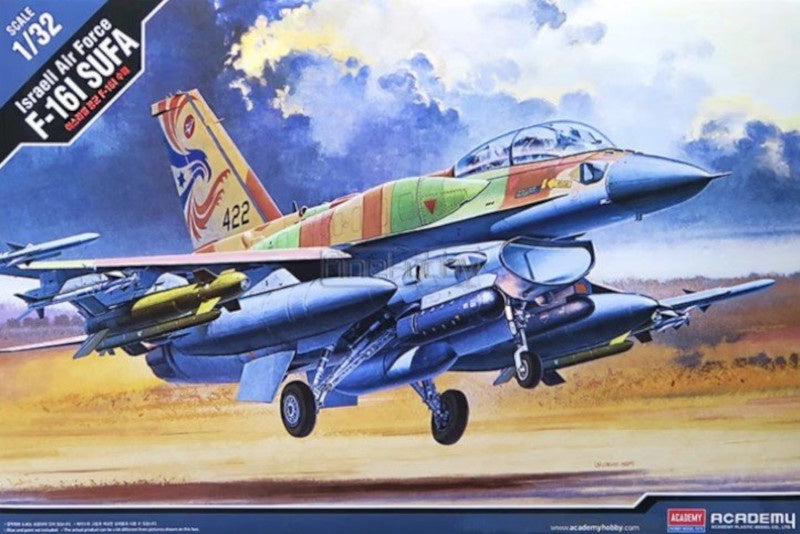Academy 1:32 Israeli AF F-16I SUFA
Academy 1:32 Israeli AF F-16I SUFA is backordered and will ship as soon as it is back in stock.
Couldn't load pickup availability
Delivery and Shipping
Delivery and Shipping
We use tracked courier for fast delivery New Zealand wide
Description
Description
The General-Dynamics F16 Falcon is an American single-engine multi-role light fighter and stormtrooper. Work on the F-16 project began in 1971 at the General Dynamics concern (which was part of the giant Lockheed Martin in 1993) and took part in the competition for a light multi-role fighter (LWF) for the US Air Force. The YF-16 prototype first flew on February 2, 1974. A breakthrough in technical terms was the use of a computerized fly-by-wire electrical control system, which made it possible to control the area of the wings and tailplane, and therefore the weight of the whole to reduce aircraft. The F-16 was the first fighter aircraft in the world to use such a system. The first versions consisted largely of aluminum alloys (about 83% of the overall structure), but over time gave way to composite materials. The different versions of the F-16 are powered by three versions of the engines: Pratt-Whitney F-100-PW-200, General Electric F110-GE100 and Pratt-Whitney F-100-PW-2020. The "brains" of the guidance system was the APG-66 radar, which was later replaced by the APG-68 (V) radar. It is worth noting that the YF-16 design turned out to be so successful that it not only won the LWF competition in the USA (in competition with the Northrop YF-17 aircraft), but also won the centenary contract for a multi-purpose weapon Fighters for European NATO countries. Its rivals were the Dassault Mirage F.1 and SAAB J-37 Viggen machines. Serial production of the F-16 began in 1975. It was also visited by European NATO countries, for which it was an injection of new aviation technologies. Final assembly took place in the USA, Belgium and the Netherlands. The first production F-16A Fighting Falcon was flown on August 7, 1978. It is an attack version of the F-16, intended primarily to counter ground targets. The F-16 has also proven itself in combat, with a number of aerial victories in the Lebanon War (1982) and during Operation Desert Storm (1991). By the end of the 20th century, more than 4,000 examples of this successful aircraft were produced. There were six basic versions of the F-16, designated A, C, E (single-seater) and B, D, F (two-seater). On the basis of these six models, numerous modernizations are created, most often associated with the replacement of avionics and marked as "block". The F-16 has also served in Polish aviation since 2006. The Polish Ministry of Defense decided that the F-16 would be the backbone of the modernized air force and rejected offers from Dessault and SAAB, although in this case they were Mirrage F2000 and JAS-39 Grippen fighters. Undoubtedly the highest sum that the American company received within the framework of the so-called compensation transaction. Technical data: Maximum speed: 2,170 km/h, climbing speed: 254 m/s, maximum ceiling 15,240 m, maximum range:3,890 km, armament: fixed - a 20 mm six-barreled M61A-1 cannon, suspended - up to 9,275 kg of cargo.
1:32 scale plastic assembly kit.
Requires glue and paints to complete.
Payment & Security
Payment methods
Your payment information is processed securely. We do not store credit card details nor have access to your credit card information.




